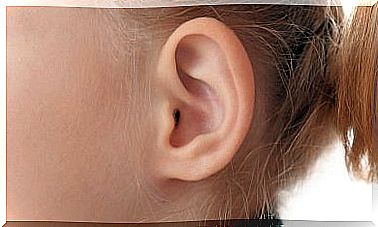Bimodal Language: What Is It And What Are Its Advantages?

Parents always try to communicate with our children to find out what their concerns are and thus be able to help them in whatever they need; even more so when there are limitations at the speech, auditory, intellectual or neurological level, which make this interrelation difficult in some way. In these cases, one of the options is bimodal language; What is it about?
Depending on the type of language disorder that the infant presents, the use of bimodal language is necessary that allows increasing communication between the child and his environment. This language consists of combining speech with manual signs; in other words, the child is being talked to while the signs are being made.
Types of language disorders
Language disorder is the difficulty of finding the right words to express yourself or to understand what others are saying. These problems can be congenital or acquired and manifest in three ways:
- Receptive language difficulties: It is l a inability to understand what other people are saying.
- Expressive language complications: It refers to the difficulty of putting your thoughts and ideas into words.
- Mixed receptive-expressive language disorder: It is about the inability to understand the words of others and express oneself clearly through the words:
When is it necessary to resort to bimodal language?
Bimodal language is introduced when there are certain language disorders in the child that make communication difficult with his parents or other people who interact with him. Next, the conditions that may arise in the child are mentioned to require it.
- Intellectual disability : Generally, young children with this problem learn more slowly than other children.
- Aphasia: It is an acquired disorder of oral or written language; there are problems reading, writing or speaking as a result of a brain injury (such as cerebrovascular accidents, head trauma, brain tumors, among others). It can occur in children and adults.

- Dysphasia: It is an oral language disorder; supposes the difficulty to express oneself and to understand the language. The cause that originates it is not known; It usually occurs in childhood and is related to the maturation of neurological processes in the child’s brain.
- Autistic spectrum: It consists of developmental limitations that can produce social, communicational and behavioral problems.
- Little or no oral language: The child suffers from speech disorders; these are generally children who hear but do not develop oral language.
- Hearing impairment or disability: It refers to the loss of hearing function, which results in an inability to listen and, therefore, also to speak.
Advantages of its use
This technique can facilitate and solve problems that may arise in communication in the aforementioned cases. At first, it may happen that the child has a hard time understanding it; however, later on you will understand just by looking at a sign.
In short, the benefits of using bimodal language are the following:
- Use hand signs: When there is a limitation of speech, the use of motor skills is allowed. However, as long as the infant is small this will be somewhat difficult.
- Understand the language of others: It allows to accelerate the learning and the appearance of oral language.
- Sequential auditory memory operation: This is very affected in the cases of children with intellectual disabilities and diphasia, because it allows that, when hearing a phrase, it is related to a concept and then reproduced.
- Activation of visual sequential memory, as well as kinesthetic memory. The first involves memorizing visual objects in sequence; the second, meanwhile, refers to the memories of the movement.
- Provide an instrument of expression: The child will be able to refer to other things, not only the current (the here and now), but also absent people, their feelings and other intangible concepts.
- It is easy to learn and use: Infants find certain f Ability to repeat movements as they observe them.
- Improves Deaf-Hearing Relationships: Bimodal language facilitates and improves communication when speech and hearing are limited.

Why is bimodal language recommended?
The use of bimodal language at first can be somewhat difficult, both for children and parents, due to the lack of familiarity and ignorance of it. However, as you progress with its use, it will become easier, since signs tend to give better retention in memory than words.
Due to its success and its effectiveness, bimodal language has made specialists such as speech therapist Marc Monfort recommend it as the first option. early and in advance. Its rationale is that this prevents the child from being defenseless to communicate, either in their family environment or at school.










